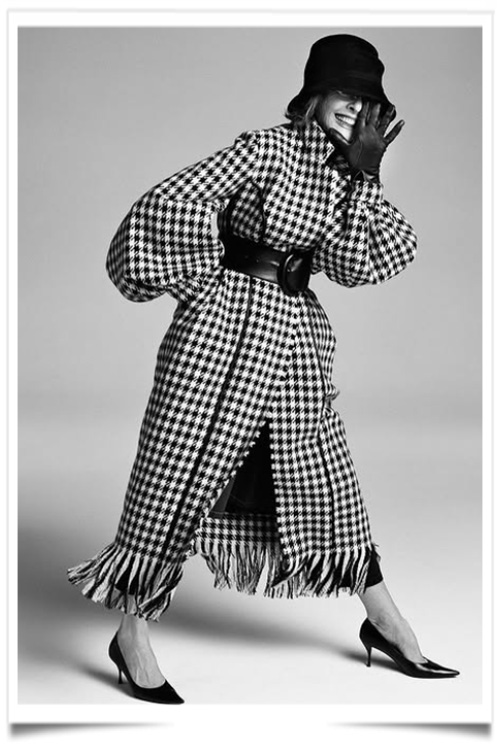 There are beings whose clothing becomes the reflection of their soul, and Diane Keaton was one of them. Each fabric she wore seemed to gather a fragment of her thought; each accessory, a tremor of her free spirit. It was a style all her own a wide-brimmed hat worn like a diadem of defiance, glasses that filtered the world’s light, vests or turtlenecks embracing the discreet grace of a woman’s neck, ties or scarves chosen not to seduce but to signify independence. Pleated trousers, as ample as a breath, harmonized with jackets sometimes tweed, sometimes velvet and in that blend of daring and restraint, she found her truth.
There are beings whose clothing becomes the reflection of their soul, and Diane Keaton was one of them. Each fabric she wore seemed to gather a fragment of her thought; each accessory, a tremor of her free spirit. It was a style all her own a wide-brimmed hat worn like a diadem of defiance, glasses that filtered the world’s light, vests or turtlenecks embracing the discreet grace of a woman’s neck, ties or scarves chosen not to seduce but to signify independence. Pleated trousers, as ample as a breath, harmonized with jackets sometimes tweed, sometimes velvet and in that blend of daring and restraint, she found her truth.
They called it the “Annie Hall style.” They were mistaken. It was not a role but a revelation the “Diane Keaton style.” From her very first appearance in Woody Allen’s film, this language of clothing became an eternal signature and consecrated her as an icon. An Oscar was bestowed upon her, as one crowns a muse for her brilliance, yet even then, the tribute fell short of what she embodied: the freedom to be oneself.
Fifty years passed, and fashion, like a river, changed its course; but Diane remained faithful to her own shore. Designers often came to draw from it, copying her lines, imitating her light. On red carpets, she could still be seen a clear, determined silhouette dressed sometimes in a masculine suit, sometimes in a flowing dress cinched with a wide belt, as if to remind the world that elegance is first and foremost an inner vow.
Last year, she lent her grace to fashion shows Ralph Lauren’s in New York, Thom Browne’s in Paris where her presence seemed to bless contemporary creation with a benevolent gaze. At seventy-nine, she still carried within her the quiet fire of beginnings.
Asked about her art of dressing, she replied simply, with the clarity only sincere spirits possess:
“I wear what I love. I still love turtlenecks, hats, and jackets. I think I wear suits more than ever these days. And then… a wide belt.”
But Diane’s universe extended far beyond clothing. She lent her vision to the home to everyday objects, to the light that rests upon them. In 2024, she collaborated with the California brand Hudson Grace to create a collection of tableware and bed linens ruled by her two favorite tones: black and white the twin poles of an unadorned life.
Thus lived Diane Keaton: between shadow and light, faithful to herself, both muse and builder, poetess of attire and architect of the everyday. And when the end came, gentle as the closing of a long-open book, it seemed the world had lost less an actress than a way of being that of a free spirit, clothed in truth.
I will remember until my death our meeting in Santa Ana, so long ago now.
With love,
François, the Frog.
